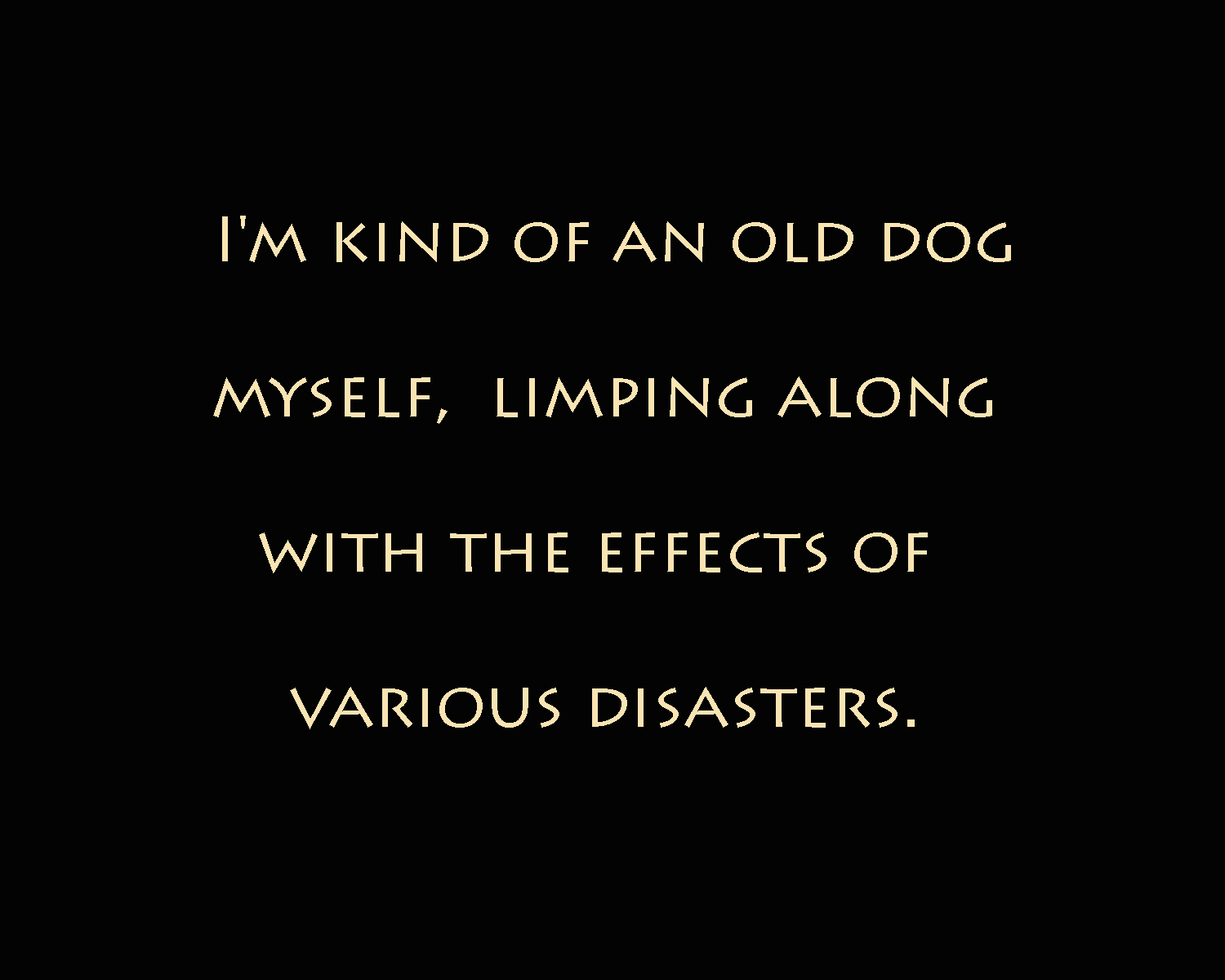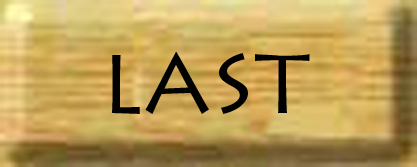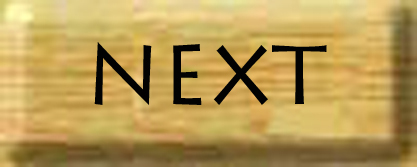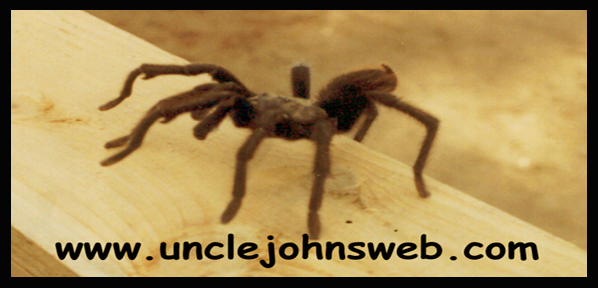
Tahachapi Earthquake
On most of my adventures, no police had to be called, and no search undertaken.
Back in the day, the phrase for "back in the day" was "in the olden days", or "in the good-old days." Anyway, life used to be a great deal more hazardous than it is now. Newly invented technologies were put into use with dangerous flaws in design and chemistry that were not immediately obvious.
For instance, the Model A Ford had no fuel pump. Gas went from the gas tank to the carburetor of its four-cylinder engine by gravity. An efficient way to make this work was to position the gas tank directly above the engine. So your Model A had its fuel tank right in front of the windshield. You had 10 gallons of gasoline sitting just above the driver and passenger's laps. What could go wrong? When I was a teenager, people making hot rods out of model A's would add a fuel tank in the back, often made from a beer keg, and install an electric fuel pump to keep up with the needs of a beefier engine.
Certain practices would be unthinkable today. Kids were allowed to play with mercury and lead, for instance. In school we were shown how to remove some liquid mercury from an old thermometer or thermostat to play around with. It made a shiny rounded metallic puddle in your hand, and when put on a smooth surface like a plate, you could break it up, then watch it rejoin. They showed us how it adhered to a silver dime, which made it shiny at first, then it slowly turned dull, and rubbing it between your fingers, it was oddly slippery but dry. Common household antiseptics containing mercury: mercurochrome and merthiolate, were applied directly to open wounds.
Lead was everywhere. There were lead pipes, even water pipes, lead roof flashing, and there were cast iron sewer pipes that were joined and sealed with molten lead that workers melted on site. There was lead in the paint, and lead in the air from the burning of leaded gasoline. There were lead balancing weights on car and truck wheels, and lead sinkers for fishing. One little project a kid could do was to make his own sinkers. For a mold, you would fashion a little hole in the ground. "Ask your mom for an old saucepan that she's not going to use anymore", get a lead wheel weight, put it in the pan, put the pan on the stove, and turn on the burner. Sure enough, in a few minutes the lead would turn liquid, and you would take it outside and pour it into your molds, inserting a loop of wire or a fence wire staple while it was still molten. And there you had it; a sinker. It was really silly thing to do since sinkers were cheap, but it kept the kids occupied for a while, though breathing lead fumes.
Lead was a common ingredient in all kinds of paint because its opacity protects surfaces from sunlight. Any sanding or demolition of a painted surface releases breathable dust. Current building codes require extreme measures in dealing with the problem when working on houses built before the mid-1970's.
Asbestos was in use as a fireproof padding in home heaters and furnaces, and in about 1953, Grandma's house in Carpinteria was upgraded with pale green asbestos shingle siding. My father smoked cigarettes most of his life, and for a certain amount of time he smoked Kent cigarettes, "...with the Micronite filter." The filter was made with cancer causing asbestos.
In the late 1940's and 1950's, some shoe stores had x-ray machines, fluoroscopes, that you could stand on to see how your new shoes fit. My mom was rightfully suspicious and wouldn't let us kids go near them. A customer could just stand there, look down at x-rays coming right through the shoe leather, flesh and bone, and see how everything fit together. What a modern and scientific way to select your shoes. I imagine that if you were someone who had a hard time making up your mind, you would likely be sterilized by the time you walked out. But your new shoes would fit perfectly.
Cars had no seat belts in those days, not until the mid 1960's. After that, new cars were required to have them installed, but they didn't become mandatory to actually wear until the 1980's. Kids could bounce around in the back seat or ride up in the back window of a car, or in the bed of a pickup. "You kids sit down back there or you'll have to ride up front." And sometimes you could sit on the open tailgate and dangle your legs over. And you could ride for short distances clinging to the outside of the vehicle while standing on the "running boards", that was their purpose.
I have distinct memories of the horribly bad idea of the 3-lane highway. There were several of these sections on our trips from San Pedro to up through Malibu and Ventura to Carpinteria. The idea was that there was one lane going each way, and a center lane for passing in both directions. So if you found yourself behind a slow moving truck, you waited until you could see nobody using the center lane in the oncoming direction and you went for it. If you guessed right, no problem, but at times there was a motorist coming the other way in the same situation, wanting to pass, and calculating that he too could make it past his obstacle in time, and you would have the situation where the two of you are racing toward each other head on and having no way to improve your odds except by going as fast as you could.
It was worse at night, when judging the speed and distance of headlights coming at you was more difficult. Worst of all was when it was dark and raining. Windshield wipers in those days operated by the vacuum created as air was being sucked into the engine. A thin rubber tube went from the windshield wiper "motor" to a spot on the intake manifold just below the carburetor. You could hear the sound the wipers made with the tubes and pistons that made them go back and forth, "Pweeesh, pooosh, pweesh, pooosh, pweesh, pooosh". There was just one problem with this setup in the 3-lane highway situation. When you really tromped on the gas pedal to get speed to get around that truck in the dark and the rain, the strength of the vacuum increased and the wipers would stall and stop working. So there you were, racing through the dark toward a head-on and if you wanted to see how you were doing, you had to let up on the gas so the wipers would take a couple swipes and clear the glass.
And then there was the ever-present smell of oil refineries. I was breathing that stuff most of my childhood. The oil refineries in the 1940's and the increasing smog and lead poisoning in the air from ethyl gasoline in the 1950's had our generation growing up in a toxic breathing mixture. There were days in 1955 and 56 that the air was so bad, the schools had to halt outdoor sports because it literally hurt to breathe hard, and you could barely see the red sun through the smoggy sky.
Over time, life has become less hazardous in some ways, more perilous in others. The disasters of human folly are puny compared to the extremes of weather, volcanism and seismic movements.
Except for the recurring knee-deep floods in the streets of Reseda, I had never personally experienced a natural disaster where we were living in Reseda, the dead center of the San Fernando Valley. Those aptly named "gully-washers", as we called them, were mostly a nuisance that might close the schools for a day but never got into our houses.
When you look into the details of the natural geology anywhere on Earth, you realize that the entire landscape is in motion. The hills and valleys and mountains that we see and spend our lives upon are the cooled crust of a great jumbled stew. The features we see are enormous chunks that churn their way to the surface and are again swallowed. The entire California coast is a collision where the Pacific plate is a great wheel that turns and grinds itself along and under the edge of the North American Plate. All the landforms we see along the coast are debris from one plate or another, or the volcanic result of the Pacific Plate sliding under North America to a depth where it liquefies and erupts. It is a vast roiling cauldron. We sit floating precariously on the cooled debris. So it's no revelation that there will always be another earthquake in California.
On July 21, 1952, we were living in a concrete block 3-bedroom house at 18315 Gault Street, in Reseda, when the 7.3 Tehachapi Earthquake tossed me out of bed just before 5 in the morning. The epicenter was over 50 miles to the Northwest, and it had the strength to launch me out of bed and onto the floor. But that was the end of it. News reports told of the women's prison at Tehachapi cracking open and a number of escapes, but everywhere else, life went on.
That was my earthquake experience; beside the occasional minor earthquakes that we in California think of as inevitable. We expect them once or twice a year, leaving some store shelves dumped, wine bottles smashed, and some structural damage near the epicenter. Except for this one, I was never close enough to be affected directly. The big ones are decades apart and there is always more coming, big and small. That was my whole history with natural disasters until the early nineties, when as a FEMA inspector, I got a close hand look at the truly devastating Northridge Earthquake, just north of Reseda in the center of the Valley, in and around my old neighborhoods.
The worse thing that happened to me in Reseda was that I got hit by a car on my bicycle a couple of times, my fault. My little dog Tyke got hit twice too, and each time he came home with a broken leg, my Mom put a splint on it, and sure enough, over a month or so the leg would knit itself together. Once his leg healed, you would see him jogging along and he would hold a one paw up for a few beats and then another, then another.
I'm kind of an old dog myself, limping along from the effects of various disasters.
I heard my first koan when we were living in that house, I was 8 years old. My sisters were 12 and 13 at the time and our interests had diverged. I was generally dismissive of their girly things; clothes, paper dolls, pop stars, make-up, movie actors, secrets; so when I heard them giggling about something in their bedroom, "What is the sound of one hand clapping?" I took it to be more of their silliness, like secret coded messages or variations of Pig Latin (ig-pay atin-lay), like the little-used "Moose Latin" (mal-foose lal-fatin) and "Double Talk" (duhla-fuble tala-falk).
The koan kind of stuck in my mind though, that's what it's designed to do, but I didn't begin to unpack that kind of riddle until 1964, about 12 years later. Then all those puzzles became clear.





Copyright © 2022 John Oliver
All Rights Reserved
mail@unclejohnsweb.com

Back in the day, the phrase for "back in the day" was "in the olden days", or "in the good-old days." Anyway, life used to be a great deal more hazardous than it is now. Newly invented technologies were put into use with dangerous flaws in design and chemistry that were not immediately obvious.
For instance, the Model A Ford had no fuel pump. Gas went from the gas tank to the carburetor of its four-cylinder engine by gravity. An efficient way to make this work was to position the gas tank directly above the engine. So your Model A had its fuel tank right in front of the windshield. You had 10 gallons of gasoline sitting just above the driver and passenger's laps. What could go wrong? When I was a teenager, people making hot rods out of model A's would add a fuel tank in the back, often made from a beer keg, and install an electric fuel pump to keep up with the needs of a beefier engine.
Certain practices would be unthinkable today. Kids were allowed to play with mercury and lead, for instance. In school we were shown how to remove some liquid mercury from an old thermometer or thermostat to play around with. It made a shiny rounded metallic puddle in your hand, and when put on a smooth surface like a plate, you could break it up, then watch it rejoin. They showed us how it adhered to a silver dime, which made it shiny at first, then it slowly turned dull, and rubbing it between your fingers, it was oddly slippery but dry. Common household antiseptics containing mercury: mercurochrome and merthiolate, were applied directly to open wounds.
Lead was everywhere. There were lead pipes, even water pipes, lead roof flashing, and there were cast iron sewer pipes that were joined and sealed with molten lead that workers melted on site. There was lead in the paint, and lead in the air from the burning of leaded gasoline. There were lead balancing weights on car and truck wheels, and lead sinkers for fishing. One little project a kid could do was to make his own sinkers. For a mold, you would fashion a little hole in the ground. "Ask your mom for an old saucepan that she's not going to use anymore", get a lead wheel weight, put it in the pan, put the pan on the stove, and turn on the burner. Sure enough, in a few minutes the lead would turn liquid, and you would take it outside and pour it into your molds, inserting a loop of wire or a fence wire staple while it was still molten. And there you had it; a sinker. It was really silly thing to do since sinkers were cheap, but it kept the kids occupied for a while, though breathing lead fumes.
Lead was a common ingredient in all kinds of paint because its opacity protects surfaces from sunlight. Any sanding or demolition of a painted surface releases breathable dust. Current building codes require extreme measures in dealing with the problem when working on houses built before the mid-1970's.
Asbestos was in use as a fireproof padding in home heaters and furnaces, and in about 1953, Grandma's house in Carpinteria was upgraded with pale green asbestos shingle siding. My father smoked cigarettes most of his life, and for a certain amount of time he smoked Kent cigarettes, "...with the Micronite filter." The filter was made with cancer causing asbestos.
In the late 1940's and 1950's, some shoe stores had x-ray machines, fluoroscopes, that you could stand on to see how your new shoes fit. My mom was rightfully suspicious and wouldn't let us kids go near them. A customer could just stand there, look down at x-rays coming right through the shoe leather, flesh and bone, and see how everything fit together. What a modern and scientific way to select your shoes. I imagine that if you were someone who had a hard time making up your mind, you would likely be sterilized by the time you walked out. But your new shoes would fit perfectly.
Cars had no seat belts in those days, not until the mid 1960's. After that, new cars were required to have them installed, but they didn't become mandatory to actually wear until the 1980's. Kids could bounce around in the back seat or ride up in the back window of a car, or in the bed of a pickup. "You kids sit down back there or you'll have to ride up front." And sometimes you could sit on the open tailgate and dangle your legs over. And you could ride for short distances clinging to the outside of the vehicle while standing on the "running boards", that was their purpose.
I have distinct memories of the horribly bad idea of the 3-lane highway. There were several of these sections on our trips from San Pedro to up through Malibu and Ventura to Carpinteria. The idea was that there was one lane going each way, and a center lane for passing in both directions. So if you found yourself behind a slow moving truck, you waited until you could see nobody using the center lane in the oncoming direction and you went for it. If you guessed right, no problem, but at times there was a motorist coming the other way in the same situation, wanting to pass, and calculating that he too could make it past his obstacle in time, and you would have the situation where the two of you are racing toward each other head on and having no way to improve your odds except by going as fast as you could.
It was worse at night, when judging the speed and distance of headlights coming at you was more difficult. Worst of all was when it was dark and raining. Windshield wipers in those days operated by the vacuum created as air was being sucked into the engine. A thin rubber tube went from the windshield wiper "motor" to a spot on the intake manifold just below the carburetor. You could hear the sound the wipers made with the tubes and pistons that made them go back and forth, "Pweeesh, pooosh, pweesh, pooosh, pweesh, pooosh". There was just one problem with this setup in the 3-lane highway situation. When you really tromped on the gas pedal to get speed to get around that truck in the dark and the rain, the strength of the vacuum increased and the wipers would stall and stop working. So there you were, racing through the dark toward a head-on and if you wanted to see how you were doing, you had to let up on the gas so the wipers would take a couple swipes and clear the glass.
And then there was the ever-present smell of oil refineries. I was breathing that stuff most of my childhood. The oil refineries in the 1940's and the increasing smog and lead poisoning in the air from ethyl gasoline in the 1950's had our generation growing up in a toxic breathing mixture. There were days in 1955 and 56 that the air was so bad, the schools had to halt outdoor sports because it literally hurt to breathe hard, and you could barely see the red sun through the smoggy sky.
Over time, life has become less hazardous in some ways, more perilous in others. The disasters of human folly are puny compared to the extremes of weather, volcanism and seismic movements.
Except for the recurring knee-deep floods in the streets of Reseda, I had never personally experienced a natural disaster where we were living in Reseda, the dead center of the San Fernando Valley. Those aptly named "gully-washers", as we called them, were mostly a nuisance that might close the schools for a day but never got into our houses.
When you look into the details of the natural geology anywhere on Earth, you realize that the entire landscape is in motion. The hills and valleys and mountains that we see and spend our lives upon are the cooled crust of a great jumbled stew. The features we see are enormous chunks that churn their way to the surface and are again swallowed. The entire California coast is a collision where the Pacific plate is a great wheel that turns and grinds itself along and under the edge of the North American Plate. All the landforms we see along the coast are debris from one plate or another, or the volcanic result of the Pacific Plate sliding under North America to a depth where it liquefies and erupts. It is a vast roiling cauldron. We sit floating precariously on the cooled debris. So it's no revelation that there will always be another earthquake in California.
On July 21, 1952, we were living in a concrete block 3-bedroom house at 18315 Gault Street, in Reseda, when the 7.3 Tehachapi Earthquake tossed me out of bed just before 5 in the morning. The epicenter was over 50 miles to the Northwest, and it had the strength to launch me out of bed and onto the floor. But that was the end of it. News reports told of the women's prison at Tehachapi cracking open and a number of escapes, but everywhere else, life went on.
That was my earthquake experience; beside the occasional minor earthquakes that we in California think of as inevitable. We expect them once or twice a year, leaving some store shelves dumped, wine bottles smashed, and some structural damage near the epicenter. Except for this one, I was never close enough to be affected directly. The big ones are decades apart and there is always more coming, big and small. That was my whole history with natural disasters until the early nineties, when as a FEMA inspector, I got a close hand look at the truly devastating Northridge Earthquake, just north of Reseda in the center of the Valley, in and around my old neighborhoods.
The worse thing that happened to me in Reseda was that I got hit by a car on my bicycle a couple of times, my fault. My little dog Tyke got hit twice too, and each time he came home with a broken leg, my Mom put a splint on it, and sure enough, over a month or so the leg would knit itself together. Once his leg healed, you would see him jogging along and he would hold a one paw up for a few beats and then another, then another.
I'm kind of an old dog myself, limping along from the effects of various disasters.
I heard my first koan when we were living in that house, I was 8 years old. My sisters were 12 and 13 at the time and our interests had diverged. I was generally dismissive of their girly things; clothes, paper dolls, pop stars, make-up, movie actors, secrets; so when I heard them giggling about something in their bedroom, "What is the sound of one hand clapping?" I took it to be more of their silliness, like secret coded messages or variations of Pig Latin (ig-pay atin-lay), like the little-used "Moose Latin" (mal-foose lal-fatin) and "Double Talk" (duhla-fuble tala-falk).
The koan kind of stuck in my mind though, that's what it's designed to do, but I didn't begin to unpack that kind of riddle until 1964, about 12 years later. Then all those puzzles became clear.





Copyright © 2022 John Oliver
All Rights Reserved
mail@unclejohnsweb.com

All Rights Reserved
mail@unclejohnsweb.com
